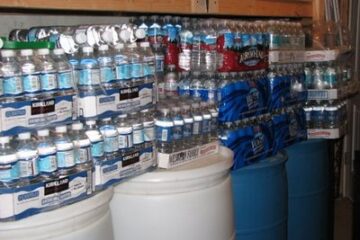Working with Gluten Water
 [/caption]
[/caption]
As the last article in our wheat meat series, I wanted to share with you some ideas about how to use the milky water you get when making wheat meat. This watery substance, known as gluten water, has a great deal of vitamins and minerals in it. So any time you can use it in a dish, you’re dramatically improving the nutrition of that dish. This water will only keep for about 24- 48 hours. (I recommend refrigerating it if you’re not going to use it right away.) After that it begins to ferment, much like a yeast starter for bread.

